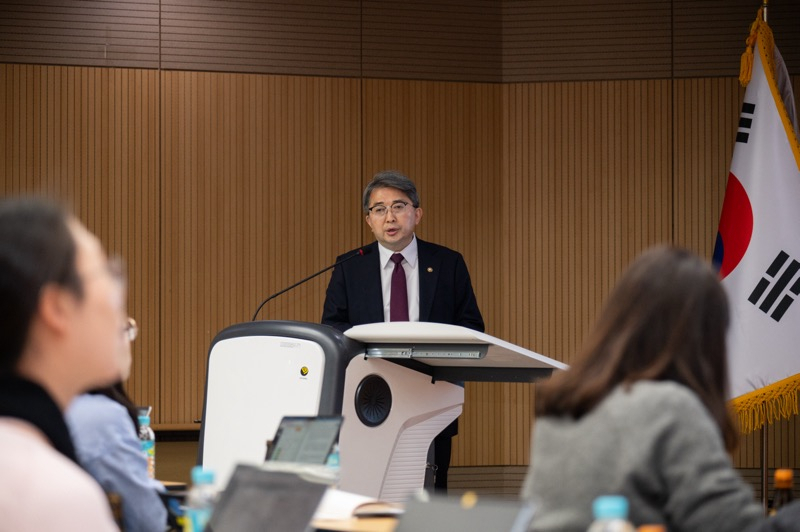Weather agency to improve earthquake, heavy rain alerts
By Lee Jung-jooPublished : Feb. 21, 2024 - 17:44

South Korea will upgrade its disaster warning system to better alert people in affected areas, while removing parts of the system that may inconvenience the public, the nation's weather agency said Tuesday.
With extreme weather events becoming more frequent due to climate change, the Korea Meteorological Administration announced a set of plans in a press conference Tuesday to strengthen the effectiveness of the KMA’s information and improve the reliability of its response measures.
This year's key policy plan rolled out by the KMA stated that recipients for emergency alert texts for earthquakes will be subdivided by city, county and district from October. This comes after an incident in November last year, when Koreans far afield awoke to a series of emergency text alerts sent nationwide at 4:55 a.m. as a 4.0 magnitude earthquake hit Gyeongju, North Gyeongsang Province.
Currently, earthquake emergency alerts are sent to everyone who is within a certain radius of the earthquake, making it possible for those who are not affected by the earthquake to also receive the alerts. The earthquake alerts were criticized in terms of their effectiveness and for disturbing those unaffected by the shaking.
“By carefully selecting those who will receive the emergency alerts, the KMA plans to minimize the inconveniences some people may experience from receiving the alerts, such as those who are in areas that barely feel the tremors,” added Yoo.
The KMA also announced that it will expand its emergency alert system for heavy rain from being issued only in the areas of Seoul, Incheon and Gyeonggi Province to also being issued in Gwangju and South Jeolla Province. The emergency alerts for heavy rain were first announced as a pilot project by the KMA in 2023, after record-setting heavy rain hit Seoul in July 2022, resulting in flooding, casualties and infrastructure damage.
Heavy rain emergency alerts are issued by the KMA when precipitation levels reach 50 millimeters in one hour or 90 millimeters in three hours.
“While it is difficult to conclude that there were lower casualty numbers due to heavy rain in 2023 because of the KMA’s emergency alerts, we did find that it was effective through a survey with the general public,” said KMA Administrator Yoo Hee-dong.
From 2024, the KMA’s heavy rain emergency alerts will be piloted in Gwangju and South Jeolla Province, while it officially begins its operation in Greater Seoul. Gwangju and South Jeolla Province were selected after analyzing the weather conditions and heavy rain frequencies in the two areas over the past 10 years.
“Last year, a woman lost her life in Hampyeong-gun, South Jeolla Province, after she went out to check the gates of a reservoir and got swept away in the middle of heavy rain,” said Yoo. “The KMA felt that if the heavy rain emergency alerts had been expanded nationwide at the time, such sacrifices would not have been made. After conducting the pilot project in Gwangju and South Jeolla Province this year, the KMA will expand the alert services nationwide.”
Additionally, the KMA will establish a basic set of plans based on scientific evidence to respond to various scenarios due to climate change, to ensure climate change policies and responses issued by the central government, local governments and public institutions can maintain consistency.
To strengthen its provision of climate forecasts, the KMA will also promote building climate change monitoring stations in inland areas and monitoring elements such as the six major greenhouse gases, as recommended by the World Meteorological Administration.
“The KMA will strive to use the climate crisis, which threatens public safety and Korea’s future, as an opportunity to protect the people’s lives and promote sustainable national development,” said Yoo.



















![[Today’s K-pop] Treasure to publish magazine for debut anniversary](http://res.heraldm.com/phpwas/restmb_idxmake.php?idx=642&simg=/content/image/2024/07/26/20240726050551_0.jpg&u=)